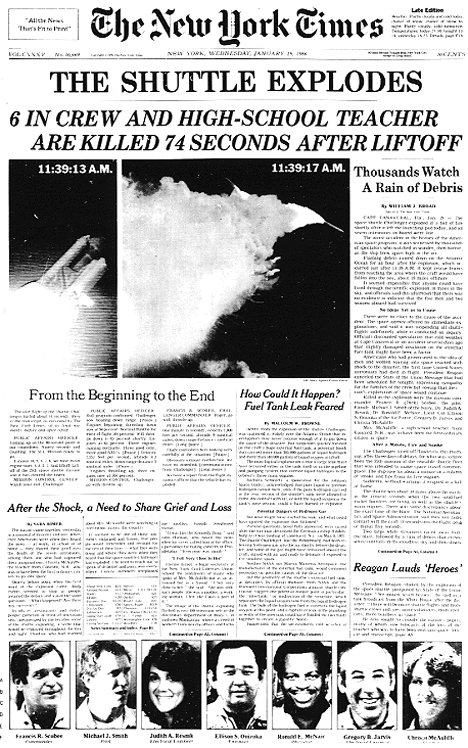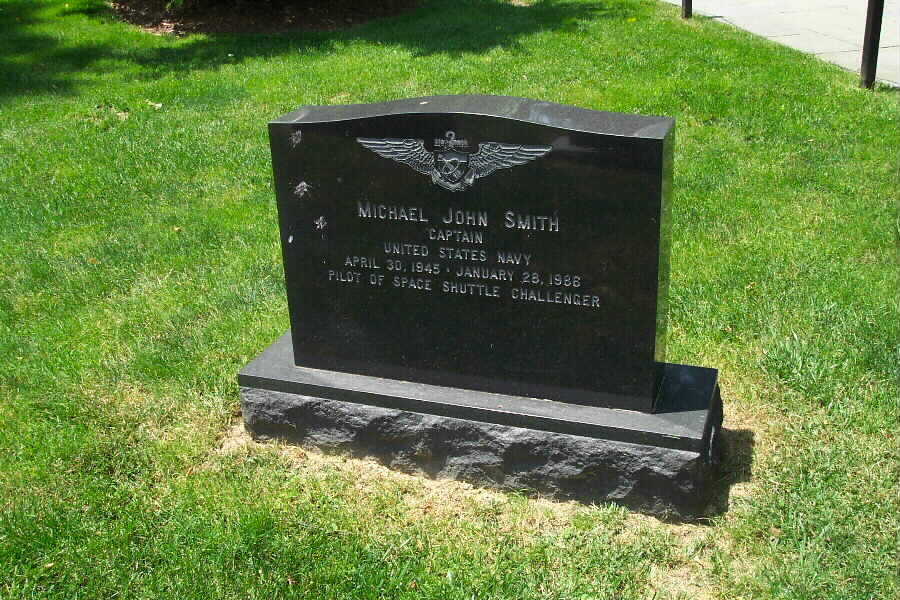Shuttle Challenger Mission Pilot and a Vietnam War combat pilot. He was born on April 30, 1945. He was a Naval Test Pilot who entered the Astronaut Corps in 1980. His first mission was 51-L aboard the Shuttle Challenger on January 28, 1986. The shuttle exploded within 73.5 seconds of launch and all aboard were killed.
His remains are buried in Section 7-A of Arlington National Cemetery, near the Tomb of the Unknowns and not far from both the Challenger Memorial and the gravesite of Lieutenant Colonel Richard “Dick” Scobee who was also killed on the flight.
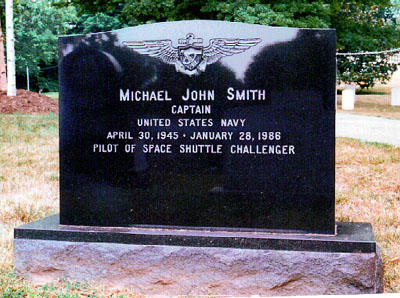
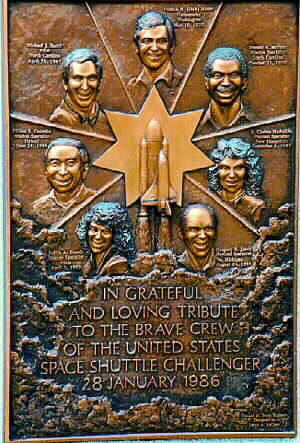
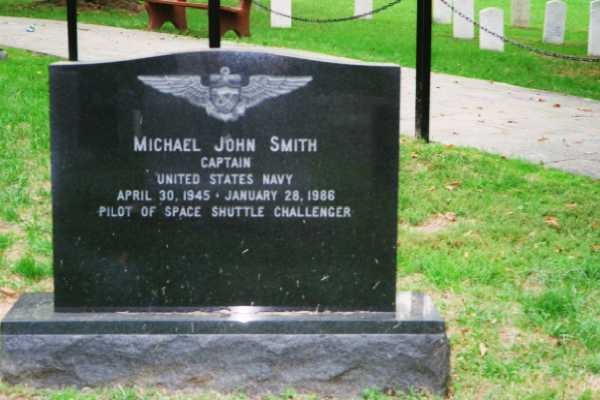
The Shuttle Explodes
6 IN CREW AND HIGH-SCHOOL TEACHER
ARE KILLED 74 SECONDS AFTER LIFTOFF
Thousands Watch Rain of Debris
Cape Canaveral, Fla. Jan. 28,1986 — The space shuttle Challenger exploded in a ball of fire shortly after it left the launching pad today, and all seven astronauts on board were lost.
The worst accident in the history of the American space program, it was witnessed by thousands of spectators who watched in wonder, then horror, as the ship blew apart high in the air.
Flaming debris rained down on the Atlantic Ocean for an hour after the explosion, which occurred just after 11:39 A. M. It kept rescue teams from reaching the area where the craft would have fallen into the sea, about 18 miles offshore.
It seemed impossible that anyone could have lived through the terrific explosion 10 miles in the sky, and officials said this afternoon that there was no evidence to indicate that the five men and two women aboard had survived.
No Ideas Yet as to Cause
There were no clues to the cause of the accident. The space agency offered no immediate explanations, and said it was suspending all shuttle flights indefinitely while it conducted an inquiry. Officials discounted speculation that cold weather at Cape Canaveral or an accident several days ago that slightly damaged insulation on the external fuel tank might have been a factor.
Americans who had grown used to the idea of men and women soaring into space reacted with shock to the disaster, the first time United States astronauts had died in flight. President Reagan canceled the State of the Union Message that had been scheduled for tonight, expressing sympathy for the families of the crew but vowing that the nation's exploration of space would continue.
Killed in the explosion were the mission commander, Francis R. (Dick) Scobee; the pilot Commander Michael J. Smith of the Navy; Dr. Judith A. Resnik; Dr. Ronald E. McNair; Lieut. Col. Ellison S. Onizuka of the Air Force; Gregory B. Jarvis, and Christa McAuliffe.
Mrs. McAuliffe, a high-school teacher from Concord, New Hampshire, was to have been the first ordinary citizen in space.
After a Minute, Fire and Smoke The Challenger lifted off flawlessly this morning, after three days of delays, for what was to have been the 25th mission of the reusable shuttle fleet that was intended to make space travel commonplace. The ship rose for about a
minute on a column of smoke and fire from its five engines.
Suddenly, without warning, it erupted in a ball of flame.
The shuttle was about 10 miles above the earth, in the critical seconds when the two solid-fuel rocket boosters are firing as well as the shuttle's main engines. There was some discrepancy about the exact time of the blast: The National Aeronautics and Space Administration said they lost radio contact with the craft 74 seconds into the flight, plus or minus five seconds.
Two large white streamers raced away from the blast, followed by a rain of debris that etched white contrails in the cloudless sky and then slowly headed toward the cold waters of the nearby Atlantic.
The eerie beauty of the orange fireball and billowing white trails against the blue confused many onlookers, many of whom did not at first seem aware that the aerial display was a sign that something had gone terribly wrong.
There were few sobs, moans or shouts among the thousands of tourists, reporters, and space agency officials gathered on an unusually cold Florida day to celebrate the liftoff, just a stunned silence as they began to realize that the Challenger had vanished.
Among the people watching were Mrs. McAuliffe's two children, her husband and her parents and hundreds of students, teachers and friends from Concord.
“Things started flying around and spinning around and I heard some oh's and ah's, and at that moment I knew something was wrong,” said Brian Ballard, the editor of The Crimson Review at Concord High School.
“I felt sick to my stomach. I still feel sick to my stomach.”
Ships Searching the Area
At an outdoor news conference held here this afternoon, Jesse W. Moore, the head of the shuttle program at NASA, said: “I regret to report that, based on very preliminary searches of the ocean where the Challenger impacted this morning, these searches have not revealed any evidence that the crew of the Challenger survived.” Behind him, in the distance, the American flag waved at half-staff.
Coast Guard ships were in the area of impact tonight and planned to stay all night, with airplanes set to comb the area at first light for debris that could provide the clues to the catastrophe. Some material from the shattered craft was reported to be washing ashore on Florida beaches tonight, mostly the small heat-shielding tiles that protect the shuttle as it passes through the earth's atmosphere.
Films of the explosion showed a parachute drifting toward the sea, apparently one that would have lowered one of the huge reusable booster rockets after its fuel was spent.
Pending an investigation, Mr. Moore said at the news conference this afternoon, hardware, photographs, computer tapes, ground support equipment and notes taken by members of the launching team would be impounded.
The three days of delays and a tight annual launching schedule did not force a premature launching, Mr. Moore said in answer to a reporter's question.
‘Flight Safety a Top Priority'
“There was no pressure to get this particular launch up,” he said. “We have always maintained that flight safety was a top priority in the program.”
Several hours after the accident, Mr. Moore announced the appointment of an interim review team, assigned to preserve and identify flight data from the mission, pending the appointment of a formal investigating committee.
The members of the interim panel are Richard G. Smith, the director of the Kennedy Space Center; Arnold Aldridge, the manager of the National Space Transportation System, Johnson Space Center; William Lucas, director of the Marshall Space Flight Center; Walt Williams, a NASA consultant, and James C. Harrington, the director of Spacelab, who will serve as executive secretary.
A NASA spokesman said a formal panel could be appointed as soon as Wednesday by Dr. William R. Graham, the director of the space agency.
All American manned space launchings were stopped for more than a year and a half after the worst previous American space accident, in January 1967, when three astronauts were killed in a fire in an Apollo capsule on the launching pad.
‘Hope We Go Today'
This year's schedule was to have been the most ambitious in the history of the shuttle program, with 15 flights planned. For the Challenger, the workhorse of the nation's shuttle fleet, this was to have been the 10th mission.
Today's launching had been delayed three times in three days by bad weather. The Challenger was to have launched two satellites and Mrs. McAullife was to have broadcast two lessons from space to millions of students around the country.
All day long, well after the explosion, the large mission clocks scattered about the Kennedy Space Center continued to run ticking off the minutes and seconds of a flight that had long ago ended.
Long before liftoff this morning, skies over the Kennedy Space Center were clear and cold, reporters and tourists shivering in leather gloves, knit hats and down coats as temperatures hovered in the low 20's.
Icicles formed as ground equipment sprayed water on the launching pad, a precaution against fire.
At 9:07 A. M., after the astronauts were seated in the shuttle, wearing gloves because the interior was so cold, ground controllers broke into a round of applause as the shuttle's door, whose handle caused problems yesterday, which was closed.
“Good morning, Christa, hope we go today,” said ground control as the New Hampshire school teacher settled into the spaceplane.
“Good morning,” she replied, “I hope so, too.” Those are her last known words.
The liftoff, originally scheduled for a 9:38 A. M., was delayed two hours by problems on the ground caused first by a failed fire-protection device and then by ice on the shuttle's ground support structure.
The launching was the first from pad 39-B, which had recently undergone a $150 million overhaul. It had last been used for a manned launching in the 1970's.
Just before liftoff, Challenger's external fuel tank held 500,000 gallons of liquid hydrogen and oxygen, which are kept separate because they are highly volatile when mixed. The fuel is used in the shuttle's three main engines.
At 11:38 A. M. the shuttle rose gracefully off the launching pad, heading in to the sky. The shuttle's main engines, after being cut back slightly just after liftoff, a normal procedure, were pushed ahead to full power as the shuttle approached maximum dynamic pressure when it broke through the sound barrier.
“Challenger, go with throttle up,” said James D. Wetherbee of mission control in Houston about 11:39 A. M.
“Roger,” replied the commander, Mr. Scobee, “go with throttle up.”
Those were the last words to be heard on the ground from the winged spaceplane and her crew of seven.
As the explosion occurred, Stephen A. Nesbitt of Mission Control in Houston, apparently looking at his notes and not the explosion on his television monitor, noted that the shuttle's velocity was “2,900 feet per second, altitude 9 nautical miles, downrange distance 7 nautical miles.” That is a speed of about 1,977 miles an hour, a height of about 10 statute miles and a distance down range of about 8 miles.
The first official word of the disaster came from Mr. Nesbitt of Mission Control, who reported, “a major malfunction.” He added that communications with the ship had failed 1 minute 14 seconds into the flight.
“We have no downlink,” he said, referring to communications from the Challenger. “We have a report from the flight dynamics officer that the vehicle has exploded.”
His voice cracked. “The flight director confirms that,” he continued. “We're checking with the recovery forces to see what can be done at this point.”
Tapes Showed Small Fire
In the sky above the Kennedy Space Center, the shuttle's two solid-fuel rocket boosters sailed into the distance.
The explosion, later viewed in slow-motion televised replays taken by cameras equipped with telescopic lenses, showed what appeared to be the start of a small fire at the base of the huge external fuel tank, followed by the quick separation of the solid rockets. A huge fireball then engulfed the shuttle as the external tank exploded.
At the news conference, Mr. Moore would not speculate on the cause of the disaster.
The estimated pint of impact for debris was 18 to 20 miles off the Florida coast, according to space agency officials.
“The search and rescue teams were delayed getting into the area because of debris continuing to fall from very high altitudes, for almost an hour after ascent,” said Mr. Nesbitt of Mission Control in Houston.
Speaking at 1 P. M. in Florida, Lieut. Col. Robert W. Nicholson Jr., a spokesman for the rescue operation, which is run by the Defense Department, said range safety radars near the Kennedy Space Center detected debris falling for nearly an hour after the explosion. “Anything that went into the area would have been endangered,” he said in an interview.
In addition, the explosion of the huge fuel supply would have created a cloud of toxic vapors. NASA officials said tonight that the hazardous gases presented no danger to land, but the Coast Guard was advising boats and ships to avoid the area.
Not a Good Ditcher
In an interview last year, Tommy Holloway, the chief of the flight director office at the Johnson Space Center in Houston, talked about the possibility of a shuttle crash at sea.
“This airplane is not a good ditcher,” he said: “It will float O.K. if it doesn't break apart, and we have hatches we can blow off the top. But the orbiter lands fast, at 190 knots. You come in and stop in 100 yards or so. You decelerate like gangbusters, and anything in the payload bay comes forward. We don't expect a very good day if it comes to that.”
On board Challenger was the world's privately owned communication satellite, the $100 million Tracking and Data Relay Satellite, which with its rocket boosters weighed 37,636 pounds.
This morning, water froze on the shuttle service structure, used for fire fighting equipment and for emergency showers that technicians would use if they were exposed to fuel. The takeoff was delayed because space agency officials feared that during the first critical seconds of launching, icicles might fly off the service structure and damage the delicate heat-resistant tiles on the shuttle, which are crucial for the vehicle's re-entry through the earth's atmosphere.
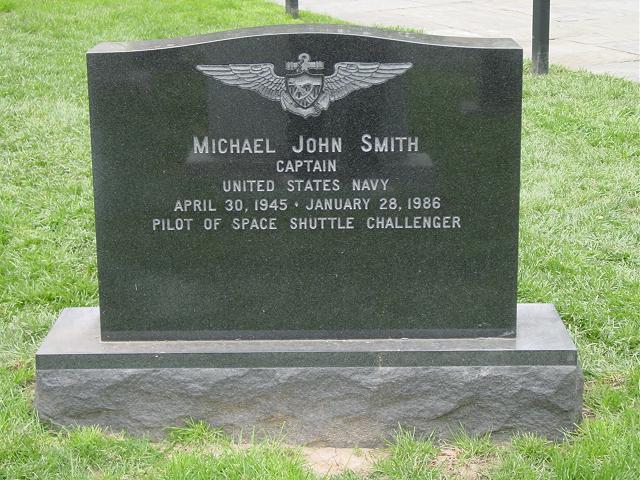
Michael Robert Patterson was born in Arlington and is the son of a former officer of the US Army. So it was no wonder that sooner or later his interests drew him to American history and especially to American military history. Many of his articles can be found on renowned portals like the New York Times, Washingtonpost or Wikipedia.
Reviewed by: Michael Howard

